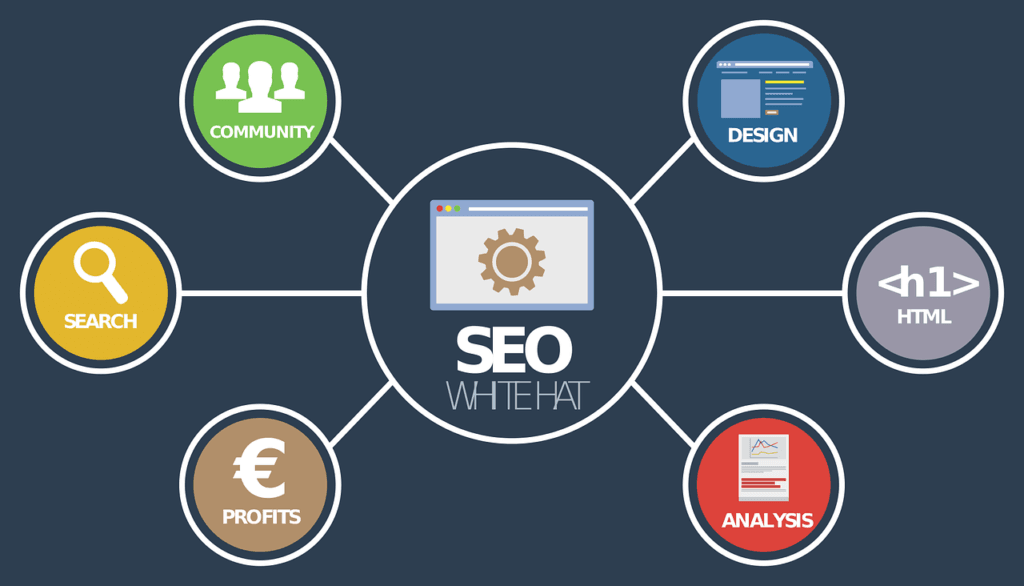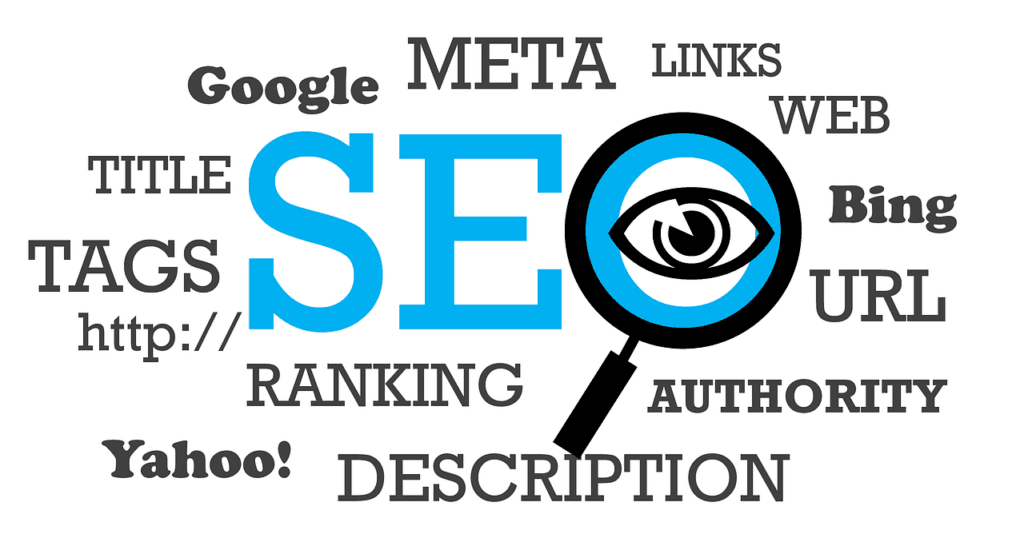This Article has been revised, edited and added to, by Poulomi Chakraborty.
In the dynamic field of biotechnology, research is the driving force behind innovation and progress. Yet, conducting groundbreaking research is only half the battle; effectively sharing and amplifying that research is equally crucial. With the advent of social media platforms, researchers and biotech professionals have a powerful tool at their disposal to disseminate their findings, collaborate with peers, and engage with a global audience.
In this comprehensive guide, we will explore how social platforms can be harnessed to amplify biotech research. From selecting the right platforms to building a strong online presence, leveraging the power of visual content, and measuring impact, we will delve deep into the strategies and techniques that can help researchers and biotech professionals make their mark in the digital age.
1. The Digital Landscape for Biotech Research

The Evolution of Communication in Biotech
Biotechnology has always been a field characterized by innovation and collaboration. In the past, research findings were primarily disseminated through academic journals, conferences, and peer-reviewed publications. While these traditional channels remain essential, the digital age has revolutionized the way researchers communicate and share their work.
The advent of the internet and social media platforms has democratized information access, enabling researchers to reach a global audience instantly. Now, research findings, insights, and discussions can transcend geographical boundaries with a simple click. This evolution in communication has profound implications for the biotech industry, as it allows researchers to not only share their work but also engage with peers, professionals, and the general public.
The Rise of Social Media in Research
Social media platforms have become pivotal in the dissemination and amplification of biotech research. These platforms offer a dynamic and accessible way to communicate findings, seek collaboration, and engage in meaningful discussions. Here are some key ways in which social media is transforming the research landscape:
- Instantaneous Sharing: Researchers can share their findings in real-time, making it possible to disseminate critical information quickly.
- Global Reach: Social media transcends geographical boundaries, allowing researchers to engage with a diverse and international audience.
- Collaboration Opportunities: Social platforms provide a space for researchers to connect, collaborate, and form valuable professional networks.
- Public Engagement: Researchers can communicate the importance and implications of their work to a broader audience, fostering public interest and support for biotech advancements.
- Access to Resources: Social platforms often serve as hubs for sharing resources, from research papers to lab techniques and protocols.
- Data and Trend Analysis: Researchers can tap into the vast amounts of data generated on social media to identify trends, sentiments, and emerging research areas.
The digital landscape has brought a paradigm shift in how research is conducted, communicated, and appreciated. Embracing these changes and effectively utilizing social platforms can significantly amplify the impact of biotech research.
2. Choosing the Right Social Platforms for Your Research

The Multitude of Social Platforms
The digital world offers a plethora of social media platforms, each with its unique features and user demographics. Choosing the right platforms for amplifying your biotech research is a crucial decision that can significantly impact your reach and engagement. Let’s explore some of the prominent social platforms and their relevance to the world of biotech research:
- Twitter: Known for its real-time nature, Twitter is an excellent platform for sharing timely research updates, engaging with the scientific community, and participating in discussions around trending topics in biotech.
- LinkedIn: LinkedIn is the go-to platform for professional networking. Researchers can use it to connect with peers, join relevant groups, and share research findings within their professional networks.
- ResearchGate: Designed specifically for researchers, ResearchGate is a platform for sharing research papers, engaging in academic discussions, and collaborating with fellow scientists.
- Academia.edu: Similar to ResearchGate, Academia.edu is a platform for academics and researchers to share their work, connect with peers, and access a wide range of academic resources.
- Instagram: While primarily a visual platform, Instagram can be used to share visually appealing scientific content, such as lab experiments, microscope images, and infographics.
- YouTube: For researchers who want to engage with a broader audience, YouTube offers a platform to create educational videos, explain research concepts, and even showcase lab tours.
- Facebook: While not as research-focused as some other platforms, Facebook can be used to connect with a diverse audience, including friends, family, and potential collaborators.
- Reddit: Subreddits related to science and biotechnology provide a space for in-depth discussions, sharing research findings, and seeking feedback from a knowledgeable community.
Tailoring Your Platform Selection to Your Research Goals
The choice of social platforms should align with your specific research goals, target audience, and content format. Consider the following factors when selecting the right platforms for your biotech research:
- Audience Demographics: Research the user demographics of each platform to ensure they align with your target audience. For instance, LinkedIn is more professionally oriented, while Instagram has a younger and visually-focused user base.
- Content Type: Determine the type of content you plan to share. If your research involves visually striking images or videos, platforms like Instagram and YouTube may be ideal. For sharing research papers and academic discussions, ResearchGate and Academia.edu are more suitable.
- Engagement and Interactivity: Evaluate the level of engagement and interactivity offered by each platform. Twitter and LinkedIn, for example, are conducive to real-time interactions and discussions.
- Networking Opportunities: Consider the networking and collaboration opportunities provided by each platform. LinkedIn and ResearchGate are designed with professional networking in mind.
- Privacy and Data Sharing: Pay attention to the privacy settings and data sharing policies of each platform, especially when sharing sensitive or proprietary research.
- Platform Trends: Stay informed about emerging trends on social platforms. New features and tools can enhance your research amplification efforts.
Selecting the right social platforms is the first step in effectively amplifying your biotech research. By tailoring your choices to your research objectives and audience, you can maximize the impact of your online presence.
3. Building a Strong Online Presence

In the digital age, establishing a strong online presence is fundamental to amplifying your biotech research effectively. Your online presence serves as a digital identity that can help you connect with peers, engage with your target audience, and share your research findings. Let’s delve into the key strategies for building a robust online presence for your research:
Crafting an Engaging Researcher Profile
- Choose the Right Profile Picture: Select a professional and recognizable profile picture. It should ideally be a high-quality headshot that conveys your credibility and approachability.
- Write an Informative Bio: Your bio is your digital elevator pitch. It should succinctly convey your research focus, interests, and affiliations. Include relevant keywords to help others find you.
- Link to Your Work: If you have a personal website, research blog, or profiles on academic platforms like ResearchGate, include links in your bio. Make it easy for interested parties to explore your work further.
- Customize Your Handle: If possible, choose a Twitter or Instagram handle that reflects your name or research focus. This makes it easier for people to mention and tag you.
- Highlight Achievements: Mention any awards, publications, or research projects you’ve been a part of. This adds credibility to your profile and showcases your expertise.
Establishing Credibility and Trust
- Share High-Quality Content: Consistently share valuable and relevant content related to your research. This can include research papers, articles, infographics, or videos.
- Engage Actively: Be an active participant in relevant discussions and conversations within your field. Share your insights, comment on others’ posts, and contribute to the collective knowledge.
- Highlight Collaborations: If you’ve collaborated with other researchers or institutions, give credit and mention them in your posts. Collaborative efforts add to your credibility.
- Maintain Professionalism: While social platforms allow for informal communication, maintain a professional tone and demeanor in your interactions. Be respectful and constructive in your discussions.
- Respond to Comments and Messages: When others engage with your content or reach out to you, respond promptly and thoughtfully. Building connections is a two-way street.
- Showcase Research Impact: Share stories or examples of how your research has made a positive impact in the real world. This helps demonstrate the practical significance of your work.
- Consistency Is Key: Maintain a regular posting schedule to keep your audience engaged and informed. Consistency helps you build a loyal following.
Building a strong online presence takes time and effort, but it can significantly enhance your ability to amplify your biotech research. By presenting yourself as a credible and engaged researcher, you’ll attract like-minded individuals, collaborators, and opportunities to further your work.

Related: Check out our free SEO suite

4. Leveraging Visual Content for Impact
In today’s fast-paced digital world, the use of visual content has become paramount in capturing and retaining the attention of your audience. Visuals can make complex research more accessible, engaging, and shareable. Let’s explore how you can leverage the power of visual content to amplify your biotech research:
The Power of Visuals in Science Communication
- Infographics: Infographics are powerful tools for simplifying complex research findings. They condense data, statistics, and key insights into visually appealing graphics that are easy to digest. Tools like Canva and Adobe Spark can help you create professional infographics.
- Videos: Videos can convey your research in a dynamic and engaging way. Consider creating short explainer videos that outline the significance and impact of your work. You don’t need a Hollywood budget—modern smartphones have excellent video capabilities.
- Graphs and Charts: When presenting data, use clear and well-designed graphs and charts. Visualization tools like Tableau or even Excel can help you create informative visuals that enhance your research papers and presentations.
- Images: Share high-quality images related to your research, such as microscope images, experimental setups, or illustrations. These visuals can help your audience better understand your work.
Creating Engaging Infographics and Videos

- Simplify Complex Concepts: Use visuals to simplify complex scientific concepts. Break down your research into digestible components that can be represented visually.
- Tell a Story: Visual content can be used to tell a compelling story about your research journey. Explain the problem, the solution, and the impact in a narrative format.
- Add Visual Appeal: Use colors, typography, and design elements that resonate with your audience. Aesthetically pleasing visuals are more likely to be shared and remembered.
- Include Citations: If you’re presenting data or findings, include citations or references to maintain the credibility of your visual content.
- Optimize for Sharing: Ensure your visuals are shareable across different social platforms. Use the appropriate image dimensions and formats for each platform.
Sharing High-Quality Images
- Image Quality: Invest in good equipment for capturing high-quality images. Whether it’s a camera for lab photos or a scanner for documents, the quality of your visuals matters.
- Annotations: When sharing images, consider adding annotations or labels to explain key features or elements. This helps viewers understand the context.
- Copyright and Permissions: If you’re using images or visuals created by others, make sure you have the necessary permissions and provide proper attribution.
- Accessibility: Ensure your visuals are accessible to a wide audience, including individuals with disabilities. Provide alt text for images and captions for videos.
- Consistency: Maintain a consistent visual style across your online presence. This helps in brand recognition and creates a cohesive online persona.
By incorporating visual content into your research amplification strategy, you can make your work more accessible and engaging to a broader audience. Visuals have the power to simplify complex ideas, tell compelling stories, and leave a lasting impact in the minds of your viewers.
5. Engaging with the Scientific Community
Engaging with the scientific community on social platforms is a pivotal aspect of amplifying your biotech research. Building connections, collaborating with peers, and participating in meaningful discussions can enhance the visibility and impact of your work. Here are strategies for effectively engaging with your scientific peers:
Participating in Discussions and Forums
- Join Relevant Groups: Many social platforms, including LinkedIn and Reddit, host groups and forums focused on specific scientific fields. Join these groups to connect with like-minded individuals and stay updated on the latest discussions.
- Contribute Meaningfully: Engage in discussions by providing thoughtful comments, sharing your expertise, and asking questions. Avoid purely self-promotional content; instead, add value to the conversation.
- Follow Thought Leaders: Identify and follow influential figures in your field. Their posts and insights can inspire your own content and expand your network.
- Host Ask-Me-Anything (AMA) Sessions: Consider hosting AMA sessions where you invite the scientific community to ask you questions about your research or expertise. It’s a great way to showcase your knowledge and build rapport.
Collaborating with Peers and Influencers
- Seek Collaborative Opportunities: Actively seek out opportunities to collaborate with other researchers and institutions. Collaborative projects and co-authored papers can broaden your reach.
- Influencer Engagement: Engage with influencers and experts in your field by sharing their content, mentioning them in your posts, or directly reaching out for collaboration or interviews.
- Cross-Promotion: Collaborate with peers or influencers to cross-promote each other’s research. This can introduce your work to new audiences.
Hosting Webinars and Live Streams
- Educational Webinars: Host webinars or live streams where you discuss your research, share insights, and provide educational content. These events can attract a live audience and later be repurposed as on-demand content.
- Q&A Sessions: Consider hosting Q&A sessions where you address questions from your audience. This direct interaction can foster a sense of community and trust.
- Announce Your Sessions: Promote your webinars and live streams well in advance to maximize attendance. Use relevant hashtags and platforms to reach a wider audience.
Engaging with the scientific community goes beyond simply sharing your research findings; it involves actively participating in the ongoing conversations and collaborations within your field. By establishing yourself as an engaged and knowledgeable member of the community, you can amplify your research impact and foster valuable connections.
6. Measuring Impact and Analytics

As you amplify your biotech research on social platforms and engage with the scientific community, it’s crucial to assess the impact of your efforts. Measuring impact not only helps you gauge the effectiveness of your strategies but also provides insights for refinement. Let’s explore the key metrics and analytics tools to consider:
Metrics That Matter in Research Amplification
- Engagement Metrics: These metrics reflect how your audience interacts with your content.
- Likes and Reactions: Indicate how well your content resonates with your audience.
- Shares and Retweets: Reflect the virality and reach of your posts.
- Comments and Replies: Show engagement and the depth of conversations.
- Follower Growth: Track the growth of your follower base over time. A steady increase suggests that your content is attracting new audiences.
- Click-Through Rate (CTR): If you share links to your research or website, monitor the CTR to assess how effective your call-to-actions are in driving traffic.
- Reach and Impressions: These metrics reveal how many people have seen your content. Reach represents unique views, while impressions count total views.
- Conversion Rate: If your goal is to drive specific actions (e.g., signing up for a newsletter or downloading a research paper), monitor the conversion rate.
Interpreting Analytics Data for Strategy Refinement
- Content Analysis: Identify the types of content that perform best. Do infographics receive more engagement than text posts? Are certain topics more popular?
- Audience Insights: Understand the demographics and interests of your audience. This can help tailor your content to their preferences.
- Posting Schedule: Analyze when your posts receive the most engagement. Adjust your posting schedule to maximize visibility during peak times.
- Competitor Benchmarking: Keep an eye on your competitors or peers in the field. Analyze what works well for them and adapt successful strategies.
- A/B Testing: Experiment with different content formats, headlines, or posting times and measure their impact to refine your approach.
- ROI Calculation: If you invest in advertising or sponsored content, calculate the return on investment to ensure you’re allocating resources effectively.
- Feedback and Sentiment Analysis: Monitor comments and feedback to gauge sentiment around your content. Use this feedback to make improvements.
- Long-term Trends: Look for trends in your data over time. Are there seasonal patterns or changes in engagement that you can attribute to specific actions?
Analytics tools provided by social platforms (e.g., Twitter Analytics, LinkedIn Analytics) offer valuable insights into your performance. Additionally, third-party tools like Google Analytics and Hootsuite can provide more in-depth analysis and cross-platform tracking.
Regularly reviewing and interpreting your analytics data empowers you to refine your content strategy, optimize your engagement tactics, and ultimately enhance the impact of your biotech research amplification efforts.
Conclusion
In the age of digital communication, social platforms have emerged as invaluable tools for amplifying biotech research. The journey from conducting groundbreaking research to disseminating it widely and engaging with the scientific community has been transformed by the power of social media. In this comprehensive guide, we’ve explored the strategies and techniques that can help researchers and institutions make the most of this transformative potential.
From carefully choosing the right social platforms that align with your research goals to crafting an engaging online presence, leveraging visual content for impact, actively engaging with the scientific community, measuring your impact, and learning from real success stories, we’ve delved deep into the world of research amplification.
By effectively utilizing these strategies, researchers and institutions can connect with a global audience, build collaborative networks, and make their research accessible and engaging to a wider spectrum of people. In doing so, they not only advance their own work but also contribute to the broader mission of driving progress in biotechnology and its applications.
The road to impactful research amplification may require dedication, experimentation, and continuous learning, but the rewards in terms of knowledge dissemination, collaboration opportunities, and societal impact are immeasurable.
As you embark on your journey to amplify your biotech research on social platforms, remember that the digital landscape is ever-evolving. Stay curious, stay engaged, and stay adaptable to new tools, trends, and technologies that can enhance your research communication efforts.
Read More
- Keyword Research for Startup Webinars: Driving Registrations
- Startup SEO Keyword Trends: Predictions for Future Search Behavior
- Keyword Research for Startup Email Marketing: Boosting Open Rates
- Keyword Research for Startup FAQ Pages: Addressing User Queries
- Using Keyword Synonyms and Variations for Startup SEO

















